Mayor
In many countries, a mayor (from the Latin māior, meaning "greater") is the highest ranking officer in a municipal government of local town or large urban city.
In many systems, the mayor is a politician who serves as chief executive officer and/or ceremonial official of many types of municipalities. Worldwide, there is a wide variance in local laws and customs regarding the powers and responsibilities of a mayor, as well as the means by which a mayor is elected or otherwise mandated.
Contents |
English-Saxon mayors and counterparts
In England, the mayor is the modern descendant of the feudal lord's bailiff or reeve (see borough). The chief magistrate of London bore the title of portreeve for considerably more than a century after the Norman Conquest. This official was elected by popular choice, a privilege secured from King John. By the beginning of the twelfth century the title of portreeve gave way to that of mayor as the designation the chief officer of London. The adoption of the title by other boroughs followed at various intervals.
In the 19th century, in the United Kingdom, the Municipal Corporations Act 1882, section 15, regulated the election of mayors. He was to be a fit person elected annually on 9 November by the council of the borough from among the aldermen or councillors or persons qualified to be such. His term of office was one year, but he is eligible for re-election. He may appoint a deputy to act during illness or absence, and such deputy must be either an alderman or councillor. A mayor who was absent from the borough for more than two months becomes disqualified and vacates his office. A mayor was ex officio a justice of the peace for the borough during his year of office and the next year. He received such remuneration as the council thought reasonable. These provisions have now been repealed.
The office of mayor most modern English boroughs and towns did not in the twentieth century entail any important administrative duties, and was generally regarded as an honour conferred for local distinction, long service on the Council, or for past services. The mayor (who had to be a serving elected councillor) was expected to devote much of his (or her) time to civic, ceremonial, and representational functions, and to preside over meetings for the advancement of the public welfare. His or her administrative duties are to act as returning officer at parliamentary elections, and as chairman of the meetings of the council. However, since reforms introduced in 2000, 12 English boroughs have directly-elected mayors who combine the 'civic' mayor role with that of Leader of the Council and have significantly greater powers than either.
The mayor of a town council is officially known as town mayor (although in popular parlance, the word "town" is often dropped). Women mayors are also known as "Mayor"; the wife of a mayor is known as the "Lady Mayoress".
Mayors are not appointed to District Councils which have not adopted the title of borough. Their place is taken by the Chairman of Council, who undertakes exactly the same functions and is, like a Mayor, the civic head of the district concerned.
Other counterparts
In Germany, Scandinavia and the Netherlands (see below) the chief town magistrate is called, respectively "Bürgermeister/borgmästare/burgemeester" 'Chief of the Bürger viz. burgers/citoyens, i.e., Burgesses, citizens' (see that article G. Bürgermeister, Dutch burgemeester; Swedish borgmästare; Estonian bürgermeister; Danish borgmester; Luxemburgish buergermeeschter; French-speaking parts of Belgium use bourgmestre).
The equivalent in Italy is sindaco (historical titles include podestà), in Greece δήμαρχος 'demarkhos' (the "archon of the deme"), in France Maire, in Argentina intendente, in Bohemia starosta, in Brazil prefeito 'prefect', in Romania primar and in Spain alcalde, a term derived from a Moorish post's Arabic name.
In Canada municipal titles vary from province to province, but the highest official of a First Nation community holds the title of chief. In addition, provinces which have rural municipalities in place of counties refer to their head elected official as reeve, although some such municipalities are now changing the title to mayor as well.
In the early 20th century, and for the most still, the English method of selecting a mayor by the council was copied for the corresponding functionaries in France (except Paris) and the more important cities of Italy. Direct appointment by the central government exists in Belgium, The Netherlands, Norway and Sweden. As a rule, too, the term of office is longer in other countries than in the United Kingdom. In France election is for six years, in The Netherlands for six, in Belgium for an indefinite period. In France the maire, and a number of experienced members termed adjoint au maire 'mayoral adjunct', who assist him as an executive committee, are elected directly by the municipal council from among their own number. Most of the administrative work is left in the hands of the maire and his adjuncts, the full council meeting comparatively seldom. The adjuncts receive no salary.
In Finland, there are two mayors, in Tampere and Pirkkala. Usually in Finland the highest executive official is not democratically elected, but appointed to a public office by the city council, and is called simply kaupunginjohtaja "city manager" or kunnanjohtaja "municipal manager", depending on whether the municipality defines itself as a city. The term pormestari "mayor", from Swedish borgmästare confusingly has referred only to the highest official in the registry office, not the city manager. In addition, pormestari is also an honorary title, which may be given for distinguished service in the post of the city manager. The city manager of Helsinki is called ylipormestari, which translates to "Chief Mayor", for historical reasons. Furthermore, the term "city manager" may be seen translated as "mayor".
This is similar to Portugal, where the highest municipal authority is the presidente da Câmara Municipal, the 'president of the Municipal Chamber', appointed to his office by the city council.
In Poland the chief executive of a town or city is called burmistrz or, in towns with more than 100,000 inhabitants or others which traditionally use the title, prezydent. The equivalent title in a rural commune (gmina) is wójt. These are all directly elected posts.
Mayors by country
 Australia
Australia
On Australian councils, the Mayor is generally the member of the Council who acts as ceremonial figurehead at official functions, as well as carrying the authority of Council between meetings. Mayoral decisions made between meetings are subject to Council and may be confirmed or repealed if necessary. Mayors in Australia may be elected either directly through a ballot for the position of Mayor at a local-government election, or alternatively may be elected from within the Council at a meeting in September.
The civic regalia and insignia of local government have basically remained unaltered for centuries. The robes, the mayoral chain and the mace are not intended to glorify the individual, but rather they are a uniform of office and are used to respect and honour the people whom the users serve.
The Mayoral robe is crimson with lapels and sleeves trimmed in ermine. The Mayor may also wear a lace fall (neck piece) and cuffs.
The Deputy-Mayoral robe is crimson with lapels and sleeves trimmed with black velvet and bordered with lapin.
Mayors have the title of 'His/Her Worship' whilst holding the position.
In councils where Councillors are elected representing political parties, the Mayor is normally the leader of the party receiving the most seats on council.
 Canada
Canada
The mayor is the leader in most Canadian municipalities. However, some Canadian provinces (e.g. Ontario) still use the term reeve for the elected head of a small village, a township or a rural municipality, performing a similar role to the mayor of a town or city. The heads of county governments in Nova Scotia are often called warden, though several counties have started to use the term mayor instead. The town of Niagara-on-the-Lake, Ontario is the only municipality in Canada whose elected head holds the traditionally British title of Lord Mayor. Mayors have the title of 'His/Her Worship' while in office.
The chief executives of boroughs (arrondissements) in Quebec are termed mayors (maires/mairesses). A borough mayor simultaneously serves as head of the borough council and as a regular councillor on the main city council.
 Dominican Republic
Dominican Republic
The Mayor of a municipality in the Dominican Republic is called indistinctly alcalde or síndico. The latter name is preferred as to avoid confusing the title with the similarly sounding alcaide (lit. prison warden). Such person is the governor of the municipality whose township elected him (or her) by direct vote for a term of four years. The mayor's office daily duties are restricted to the local governance, and as such, it is responsible for the coordination of waste collection, upkeep of public spaces (parks, undeveloped urban parcels, streets, city ornate, traffic light control, sewage and most public utilities). In practice most of it duties are centered in light street repairing (new or big road projects, like overpasses, bridges, pedestrian crossings, etc. are handled by the Ministerio de Obras Públicas office, under the direct control of the Central Government), subcontracting garbage collection and management, overseeing the use of public spaces and arbitring neighborhood land use disputes (land ownership is managed by Bienes Nacionales office). Water, electrical supply and public transportation coordination are handled by several Central Government's offices, and as such, are not under control of the mayor.
 Germany
Germany
In Germany local government is regulated by state statutes. Nowadays only the mayors of the three city-states (Berlin, Hamburg and Bremen) are still elected by the respective city or community council. In all the other states the mayors are now elected directly by the EU citizens living in that area. The post of mayor may be said to be a professional one, the mayor being the head of the local government, and requiring, in order to be eligible, a training in administration. In big cities (details are regulated by state statutes) the official title is Oberbürgermeister (chief mayor). In these cities a "simple" mayor is just a deputy responsible for a distinct task (e.g., welfare or construction works). Big cities are usually kreisfrei ("free of district"). That means that the city council also has the powers and duties of a rural district council. The leader of a rural district council is called Landrat ("land counsellor"). In that case the chief mayor has also the duties and powers of a Landrat. The term Oberbürgermeister is not used in the three city-states (e.g., in Berlin Regierender Bürgermeister ("governing mayor") is used).
 India
India
In India, the mayor acts as the city bureaucrat who is generally a state-appointed officer. The Mayor in the Municipal Corporation is usually chosen through direct vote for a term of five years. The Mayor generally lacks executive authority. The Municipal Commissioner serves as the Principal Executive Officer subject to the power and administration of the Mayor as the Chief Executive Officer.
 Iran
Iran
In Iran, Mayor is executive manager of city and elected by The Islamic City Council. The Mayor is elected for a four-year term.
 Italy
Italy
In Italy the mayor is called sindaco, or informaly "first citizen". Every municipality has its mayor who represents the local government. The mayor is elected every 5 year by the inhabitants of the municipality. In Italy, the sindaco in the president of the "Consilium of the municipality". The mayor can write laws, but those must be approved by the "Consiulium". He/She can also declare the "emergency state" during natural or human calamities. The mayor is also the "local Sanity Autority". In official and Formal adveniments the mayor must wear a tri-color band (green, white, red) which is the badge of the Mayors.
 Japan
Japan
Japan's Local-Autonomy Law of 1947 defines the structure of Japanese local governments, which were strengthened after World War II. It gives strong executive power to the mayor in the local politics like strong mayors in large cities in the United States of America. The titles that are translated as "mayor" by the governments are those of the heads of cities shichō (市長), towns chōchō (町長), villages sonchō (村長), and Tokyo's special wards kuchō (区長). (The head of the Tokyo prefecture is the Governor (知事 Chiji).) A mayor is elected every four years by direct popular votes held separately from the assembly. A mayor can be recalled by a popular initiative but the prefectural and the national governments cannot remove a mayor from office. Towards the assembly the mayor prepares budgets, proposes local acts and has vetoes on local acts just approved by the assembly which can be overridden by two-thirds assembly support. A mayor can resolve the assembly if the assembly passes a motion of no confidence or if the mayor thinks the assembly has no confidence in fact.
 Moldova
Moldova
The Mayor of the municipality in Moldova is elected for four years. In Bălţi, Vasile Panciuc (PCRM) is the incumbent from 2001 and was re-elected twice: in 2003 during the anticipated elections (as a result of a new reform of the administrative division in Moldova in 2003), and in 2007. In Chişinău, the last mayor elections had to be repeated three times, because of the low rate of participation. As a result, Dorin Chirtoaca (Liberal Party), won the last mayor elections in Chişinău.
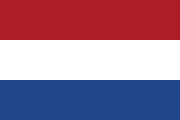 Netherlands
Netherlands
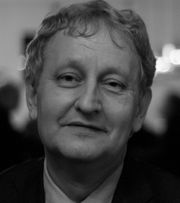
In the Netherlands, the mayor (in Dutch: burgemeester) is the leader of the municipal executives ('College van Burgemeester en Wethouders'). In the Netherlands, burgermeesters are de facto appointed by the national cabinet, de jure by the monarch. They preside both the municipal executive and the legislative ('gemeenteraad'). The title is sometimes translated as burgomaster, to emphasize the appointed, rather than elected, nature of the office. The appointment procedure was recently brought for discussion. The appointment procedure is considered undemocratic. Alternatives are direct election of the mayor by the people or appointment by the gemeenteraad. A constitutional change to allow this failed to pass the Senate in May 2005.
 New Zealand
New Zealand
Mayors in New Zealand are elected every three years in the local body elections
 Pakistan
Pakistan
Nazim (the word means "supervisor" in Urdu, but is sometimes translated as Mayor).In Pakistan is headed by the District Nazim and assisted by Naib Nazim who is also speaker of District Council. District Nazim is elected by the nazims of union councils, union councillors and by tehsil nazims, who themselves are elected directly by the votes of the local public.Council elections are held every four years.
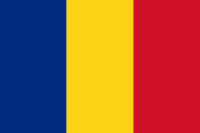 Romania
Romania
The Mayor of the municipality in Romania is elected for four years. In Bucharest for example, Traian Băsescu (The Alliance of Justice and Truth), the president of Romania was the Mayor of the municipality from 2000 to 2004.
 Spain and Spanish America
Spain and Spanish America
Alcalde is the most common Spanish term for the mayor of a town or city. It is derived from the Arabic al-qaḍi ( قاضي ), i.e., "the (Sharia) judge," who often had administrative, as well as judicial, functions. Although the Castilian alcalde and the Andalusian qaḍi had slightly different attributes (the qaḍi oversaw an entire province, the alcalde only a municipality; the former was appointed by the ruler of the state, the latter was elected by the municipal council) the adoption of this term reflects how much Muslim society in the Iberian Peninsula influenced the Christian one in the early phases of the Reconquista. As Spanish Christians took over an increasing part of the Peninsula, they adapted Muslim systems and terminology for their own use.
Today it refers to the executive head of a municipal or local government, who usually does not have judicial functions. The word intendente is used in Argentina and Paraguay for the office that is analogous to a mayor.
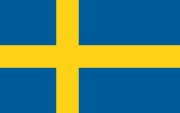 Sweden
Sweden
The Swedish title borgmästare (burgomaster) was abolished in the municipal reform of 1971. Today, the municipal commissioner - the highest ranking politician in each municipality - is informally titled "mayor" in English.
 Taiwan
Taiwan
In the Republic of China in Taiwan the mayor is the head of a city's government and is completely distinct from the associated city's council, which is in charge of legislative affairs. The mayor and city council are elected separately by the city's residents.
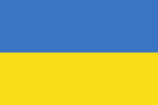 Ukraine
Ukraine
In Ukraine was introduced a title of Mer for the position of the head of the municipal state administration in the federal cities of Kiev and Sevastopol. In the rest of the urban and rural settlements the position is unofficial and is simply referring to the head of a local council who at the moment of such assignment cannot be affiliated with any party of the council.
 United States
United States

In the United States, there are several distinct types of mayors, depending on the system of local government. Under council-manager government, the mayor is a first among equals on the city council, analogous to a head of state for the city. He or she may chair the city council, but lacks any special legislative powers. The mayor and city council serve part-time, with day-to-day administration in the hands of a professional city manager. The system is most common among medium sized cities from around 25,000 to several hundred thousand, usually rural and suburban municipalities.
In the second form, known as mayor-council government, the mayoralty and city council are separate offices. Under a strong mayor system, the mayor acts as an elected executive with the city council functioning with legislative powers. He or she may select a chief administrative officer to oversee the different departments. This is the system used in most of the United States' large cities, primarily because mayors serve full time and have a wide range of services that they oversee. In a weak mayor or ceremonial mayor system, the mayor has appointing power for department heads but is subject to checks by the city council, sharing both executive and legislative duties with the council. This is common for smaller cities, especially in New England. Charlotte, North Carolina and Minneapolis, Minnesota are two notable large cities with a ceremonial mayor.
Many American mayors are styled “His/Her Honor” while in office.
Multi-tier local government
In several countries, where there is not local autonomy, mayors are often appointed by some branch of the federal or regional government. In some cities, subdivisions such as boroughs may have their own mayors; this is the case, for example, with the arrondissements of Paris, Montreal, and Mexico City. In Belgium, the capital, Brussels, is administratively one of the federation's three regions, and is the only city subdivided, without the other regions' provincial level, into 19 rather small municipalities, which each have an elected—formally appointed—Burgomaster (i.e., Mayor, responsible to his / her elected council); while Antwerp, the other major metropolitan area, has one large city (where the boroughs, former municipalities merged into it, elect a lower level, albeit with very limited competence) and several smaller surrounding municipalities, each under a normal Burgomaster as in Brussels.
In the People's Republic of China, the Mayor (市長) may be the administrative head of any municipality, provincial, prefecture-level, or county-level. The Mayor is usually the most recognized official in cities, although the position is the second-highest ranking official in charge after the local Communist Party Secretary. In principle, the Mayor (who also serves as the Deputy Communist Party Secretary of the city) is responsible for managing the city administration while the Communist Party Secretary is responsible for general policy and managing the party bureaucracy, but in practice the roles blur, frequently causing conflict.
See also
- Acting Mayor
- Lists of mayors by country
- City and town halls
- Council-manager government
- Mayor-council government
- World Mayor
- Alcalde
- Burgomaster
- Sarpanch
- Mayors and provosts in the United Kingdom
- Historical
- Schultheiß
- Urban prefect
References
- A. Shaw, Municipal Government in Continental Europe
- J - A. Fairlie, Municipal Administration
- S. and B. Webb, English Local Government
- Redlich and Hirst, Local Government in England
- A. L. Lowell, The Government of England.